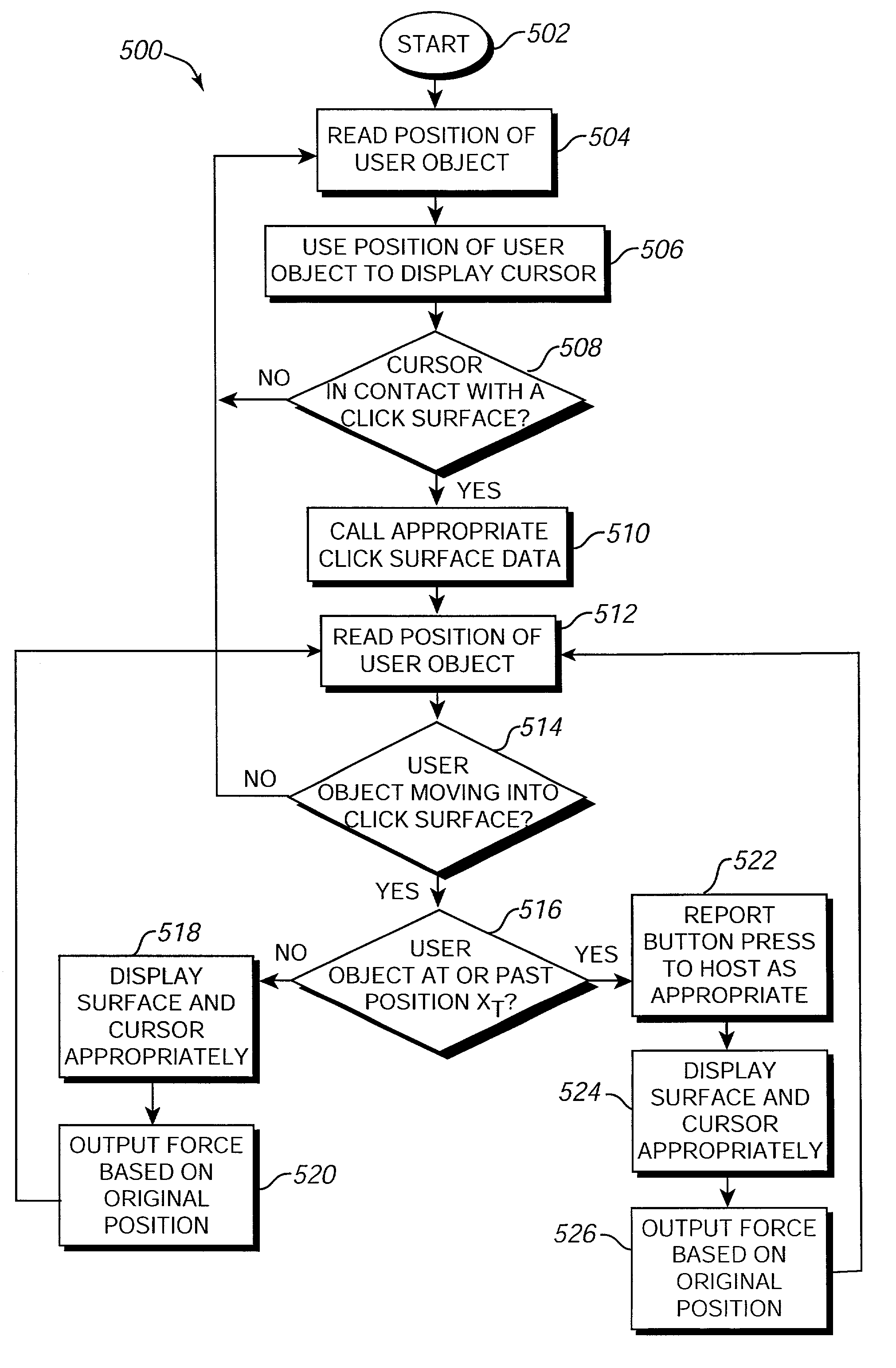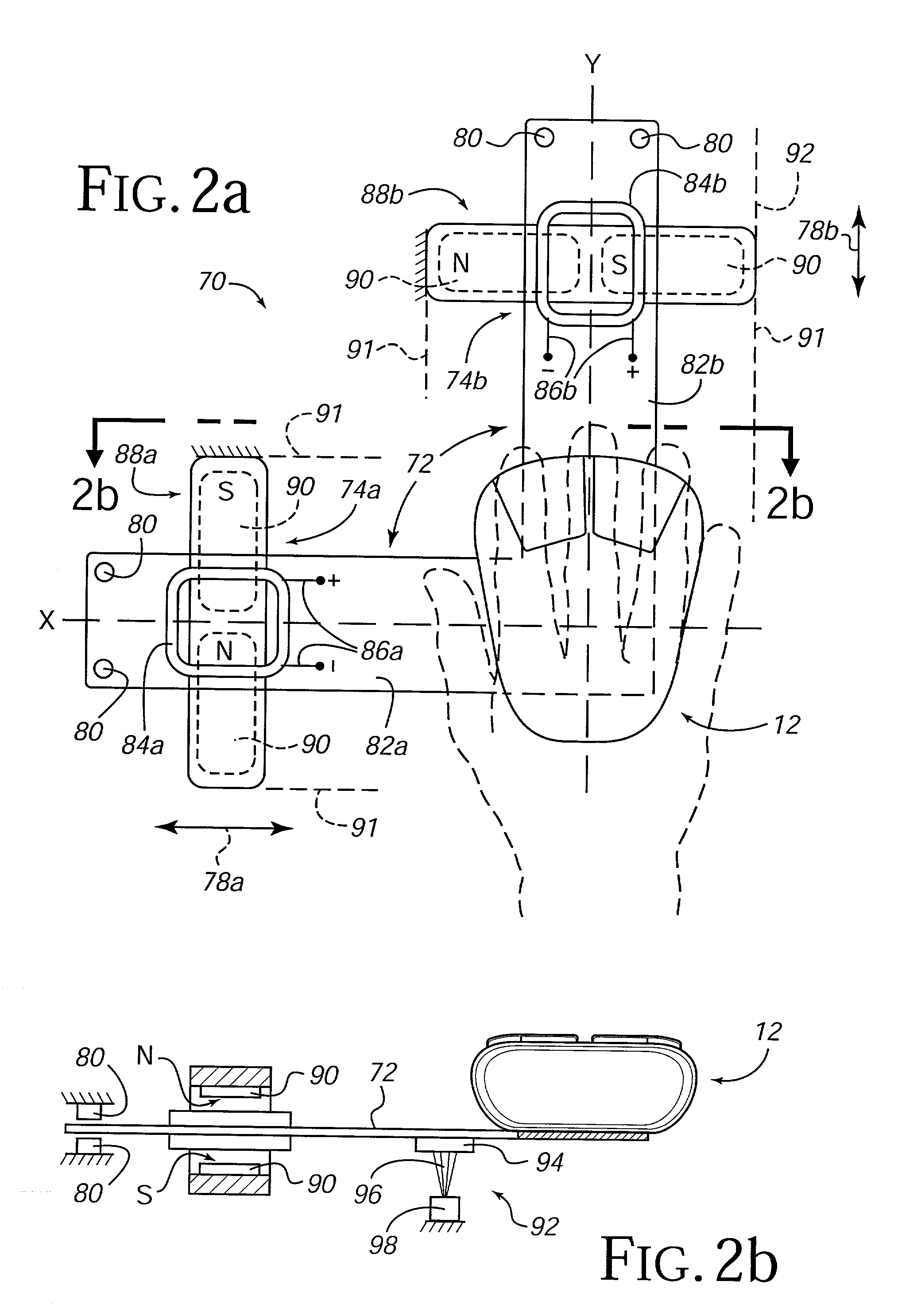Force feedback applications based on cursor engagement with graphical targets
a technology of cursor engagement and feedback, applied in the field of interface devices, can solve the problems of not having physical feedback, not very intuitive feedback, and often missing the desired command by users
- Summary
- Abstract
- Description
- Claims
- Application Information
AI Technical Summary
Benefits of technology
Problems solved by technology
Method used
Image
Examples
Embodiment Construction
[0025]FIG. 1 is a perspective view of a force feedback interface system 10 suitable for use with the click surfaces of the present invention, capable of providing input to a host computer based on the user's manipulation of the device capable of providing force feedback to the user of the interface device based on events occurring in a program implemented by the host computer. Interface system 10 includes a user manipulable object 12, a mechanical interface 14, an electronic interface 16, and a host computer 18.
[0026]User manipulable object 12 (“user object”, “physical object”, or “manipulandum”) used in conjunction with the present invention is preferably grasped or gripped and manipulated by a user. By “grasp,” it is meant that users may releasably engage a portion of the object in some fashion, such as by hand, with their fingertips, or even orally in the case of handicapped persons. For example, images are displayed and / or modified on a display screen 20 of the computer system 1...
PUM
 Login to View More
Login to View More Abstract
Description
Claims
Application Information
 Login to View More
Login to View More - R&D
- Intellectual Property
- Life Sciences
- Materials
- Tech Scout
- Unparalleled Data Quality
- Higher Quality Content
- 60% Fewer Hallucinations
Browse by: Latest US Patents, China's latest patents, Technical Efficacy Thesaurus, Application Domain, Technology Topic, Popular Technical Reports.
© 2025 PatSnap. All rights reserved.Legal|Privacy policy|Modern Slavery Act Transparency Statement|Sitemap|About US| Contact US: help@patsnap.com



